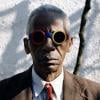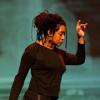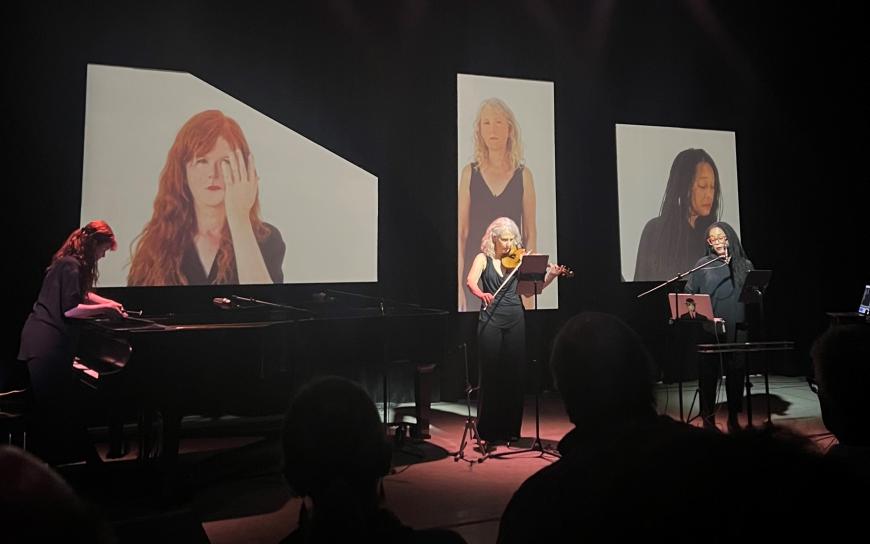
The Paul Dresher studio in West Oakland is a literal workshop — a place where ideas are bent, assembled, and refined into shape, just like the many generations of invented instruments in the next room over. Ensembles, composers, makers, and choreographers all share the space, and after the dust has been swept away, the chairs arranged into rows, and the curtains lowered to transform the setup into a hall, the work can finally be shared with an audience. On Saturday night, Sept. 24, the duo of pianist Sarah Cahill and violinist Kate Stenberg unveiled their latest commission from composer, vocalist, and electronics magician Pamela Z.
The evening began with a pair of performances by the duo, setting the tone with selections that defied simple stylistic categorization. Somei Satoh’s Birds in Warped Time II (1980) offered a weightless, flight-like experience over a soundscape that borrows liberally from Japanese melodic inflections, postminimal piano figurations, and the familiar instrumental rapport of a violin sonata. Its single movement manages to combine a kind of dreamy stillness with a central moment of unrest, returning to the opening mood along a familiar ternary pattern.
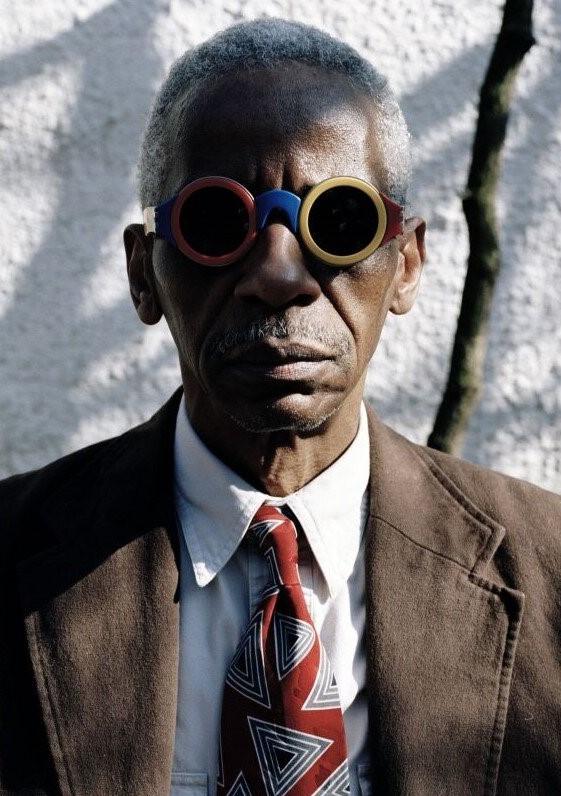
Familiarity was definitely not the name of the game for Roscoe Mitchell’s contribution to the program, 2020’s Cards in 3D Colors, which the duo premiered this past April in a retrospective celebration of the music of Mills College, where the composer taught from 2007 to 2019. Mitchell’s notated works often feature an intensely abstracted harmonic language, one that is perhaps more immediately reminiscent of the mid-century avant-gardes than of the ebullient communal music-making he championed with the Art Ensemble of Chicago and other groups. In Saturday’s piece the piano and violin parts were mainly juxtaposed to each other, with the occasional rhythmic juncture to remind the audience of Cahill and Stenberg’s unerring coordination. Mitchell’s harmonies shift and rotate like a collection of strange crystal structures, maybe not immediately recognizable but uniquely beautiful nonetheless.
The rest of the first half consisted of a trio of solo performances by Z, who dazzled with her complete vocal command, choreographed movement, and complex array of electronics processing and motion controllers. Her signature pairing of “Quatre Couches” (showcasing her trademark polyglottal and multistylistic facilities, side to side) and “Badagada” (what kids today would call “a banger”) was followed by “Breathing,” an excerpt from her Carbon Song Cycle that loops a sample of the artist’s own breathing to accompany later digital elaborations of her singing — what used to be flowing lines turn into strangulated hiccups in a poignant and effective reminder of the necessary nature of the titular act.
After a brief pause to reset the stage, the three musicians returned in combination to present Presence, the new Z work commissioned by the duo. As in several other pieces that she has written for others, Z uses interviews with the performers, conducted in her own sound booth, as a point of departure. After recording, she sifts through the files to identify and label recurring idioms, interesting pauses, and various speech patterns; eventually, those are transcribed into melodic and rhythmic patterns to generate instrumental material. Over the course of the composition, Z felt that her own voice should also be present as source material, and she turned to an interview she had recently recorded for a podcast in order to maintain the same kind of unvarnished spontaneity.
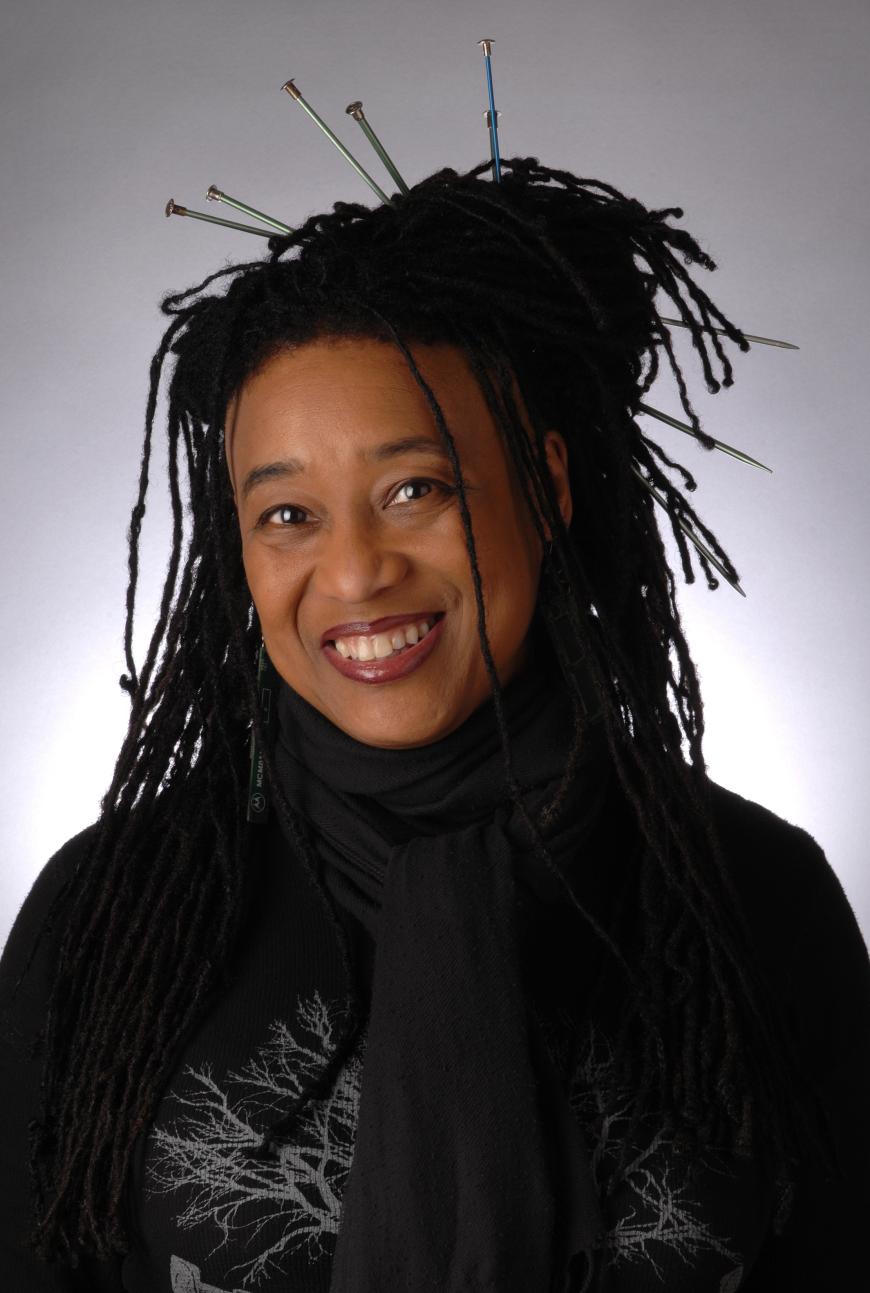
As the commissioning and compositional process for Presence straddled the ongoing pandemic, many of the spoken comments ended up focusing on the (in)ability of musicians to perform live, the challenge of not “being in the room together” with ensemble companions and audience alike. The earnestness in Cahill’s, Stenberg’s, and Z’s comments, coupled with striking video imagery of the trio projected behind the action, imbued the piece with a touching warmth on Saturday. As ever in Z’s work, there is space for levity and humor, as when violinist and pianist were recruited to the front of the stage to harness their own sampled sounds using Z’s motion controllers, their expressions a unique mix of concentration, a hint of awkwardness, and the sheer revelry of playing in such a way.
In a brief Q&A following the performance, Other Minds director Charles Amirkhanian asked what would happen to the piece in 50 years — hinting at its reliance on Z’s uniquely idiosyncratic array of techniques and technologies. The trio affirmed that they hoped to perform it many times in the future, and one imagines that it could be preserved as a video recording as well. On the other hand musical history has shown that brilliant ideas — from Harry Partch’s instrumentarium to Meredith Monk’s rote-taught arrangements and extended techniques — find ways to resonate, linger, and perpetuate themselves.
Z’s body of work definitely deserves curatorial attention, but it has already proved that it can evolve, having adapted to changing hardware and software technologies through the years. Have faith that, afforded a modicum of care, it will both endure and continue to amaze.



